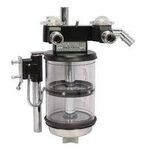Anesthesia Machine
What is Anesthesia Machine?
An anesthesia machine, also known as an anesthesia workstation, is a medical device that is used to deliver a precise mixture of anesthetic gases and other medications to a patient before, during, and after surgical procedures. Anesthesia machines are used to induce and maintain a state of unconsciousness or sedation in patients during surgery, allowing surgical procedures to be performed without causing pain or discomfort. The machine consists of several components, including a ventilator, gas delivery system, vaporizers, monitoring devices, and safety features that help to ensure the patient's safety during surgery. Anesthesia machines are operated by qualified professionals who are trained in their use, and they play a critical role in modern healthcare by making surgical procedures safer and more comfortable for patients.
Features of Anesthesia Machines:
Anesthesia machines typically consist of several components, including a gas delivery system, ventilator, vaporizer, and monitoring system.
- Gas delivery system: The gas delivery system is responsible for delivering a precise mixture of gases to the patient, typically consisting of oxygen, nitrous oxide, and various anesthetic agents.
- Ventilator: The ventilator is responsible for ensuring the patient's breathing during the surgery. It provides mechanical ventilation by controlling the patient's breathing rate and volume.
- Vaporizer: The vaporizer is responsible for delivering the anesthetic agent to the patient in a precise and controlled manner.
- Monitoring system: The monitoring system is responsible for tracking the patient's vital signs, including blood pressure, heart rate, and oxygen saturation levels, throughout the surgery.
Uses of Anesthesia Machines:
Anesthesia machines are used in a wide range of surgical procedures:
- General anesthesia: Anesthesia machines are used to administer general anesthesia, which involves rendering the patient unconscious and immobile during the surgery.
- Regional anesthesia: Anesthesia machines are also used to administer regional anesthesia, which involves numbing a specific region of the body, such as the arms or legs.
- Sedation: Anesthesia machines can also be used to administer sedation, which involves reducing the patient's level of consciousness and anxiety during the surgery.
Types of Anesthesia Machines:
Anesthesia machines are an essential part of any modern surgical theater, providing precise and controlled delivery of anesthesia and mechanical ventilation to patients during surgical procedures. There are several types of anesthesia machines available, each with its own unique features and capabilities.
- Standalone Anesthesia Machines: Standalone anesthesia machines are the most common type of anesthesia machines used in modern surgical theaters. They consist of a range of components, including a gas delivery system, ventilator, vaporizer, and monitoring system. These machines are designed to provide precise and controlled delivery of anesthesia to patients during surgical procedures. Standalone anesthesia machines are available in both electronic and pneumatic versions, with electronic machines being more common in modern hospitals due to their advanced features and capabilities.
- Portable Anesthesia Machines: Portable anesthesia machines are designed for use in remote or field hospitals, or in situations where space is limited. They are smaller and more lightweight than standalone machines and are typically designed to be easy to transport and set up. Portable anesthesia machines often come with their own battery backup systems and are equipped with advanced monitoring capabilities to ensure patient safety and comfort.
- MRI-Compatible Anesthesia Machines: MRI-compatible anesthesia machines are designed for use in surgical procedures that require the use of MRI machines. These machines are specially designed to be non-magnetic and non-interfering with MRI machines. They are typically equipped with a range of advanced monitoring systems, including pulse oximetry, capnography, and ECG monitoring, to ensure patient safety during the procedure.
- Pediatric Anesthesia Machines: Pediatric anesthesia machines are specially designed for use in pediatric surgery. They are equipped with smaller components, such as breathing circuits and masks, to accommodate smaller patients. These machines often come with a range of features and safety measures specifically designed for use with children, such as safety lockouts to prevent accidental overdoses.
- Transport Anesthesia Machines: Transport anesthesia machines are designed for use during the transport of critically ill patients between hospital departments or even between hospitals. These machines are typically lightweight and portable, with advanced monitoring capabilities to ensure patient safety during transport.





